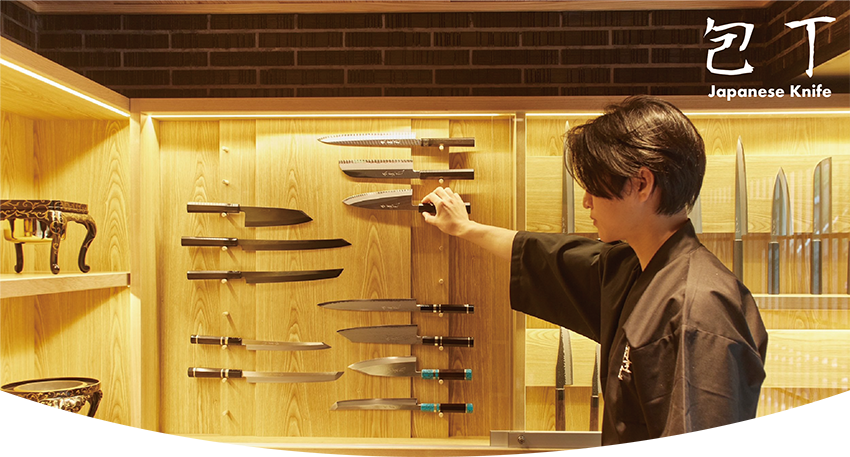
○Tips on Japanese knife
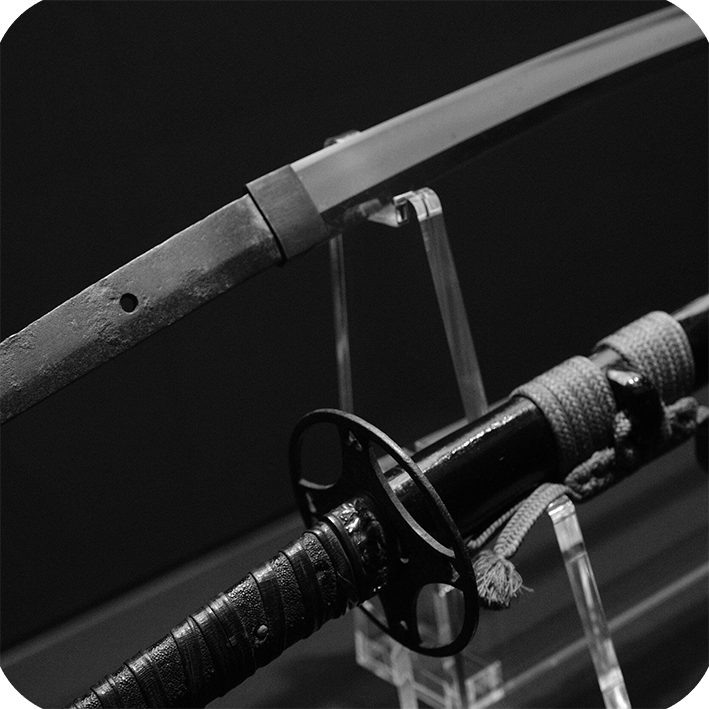
The origin of the Knife?
The origins of Japanese knives can be traced back to the Samurai sword-making tradition. Skilled swordsmiths applied their expertise to create kitchen knives with similar precision and craftsmanship. Over time various styles of Japanese knives developed, each tailored to specific culinary tasks.
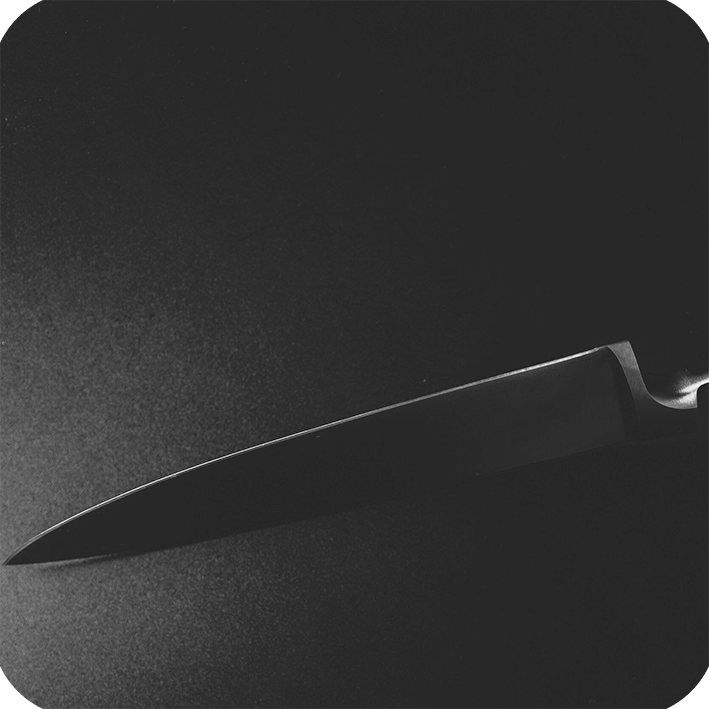
What is the difference compared to steel knives?
Stainless steel knives are made with a blend of iron, carbon, chromium, and other metals. The addition of chromium provides corrosion resistance, making stainless steel knives less prone to rust and staining compared to traditional steel knives. This makes stainless steel knives easier to maintain and suitable for use in environments with high moisture levels.
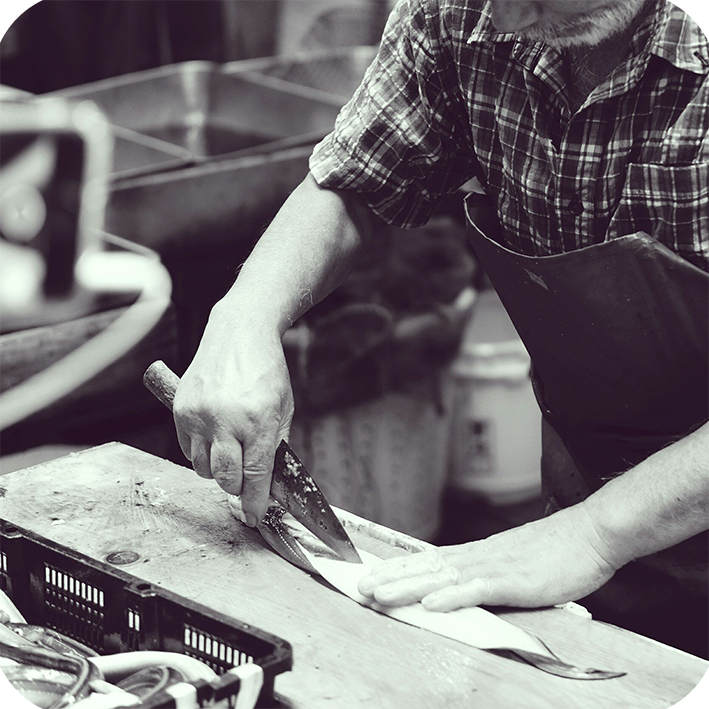
What knife can be used for anything?
A versatile chef's knife, such as a Gyuto or Santoku, is often considered a go-to option for a wide range of kitchen tasks. These knives are designed to handle various cutting, chopping, slicing, and dicing tasks with ease, making them suitable for almost everything in the kitchen.
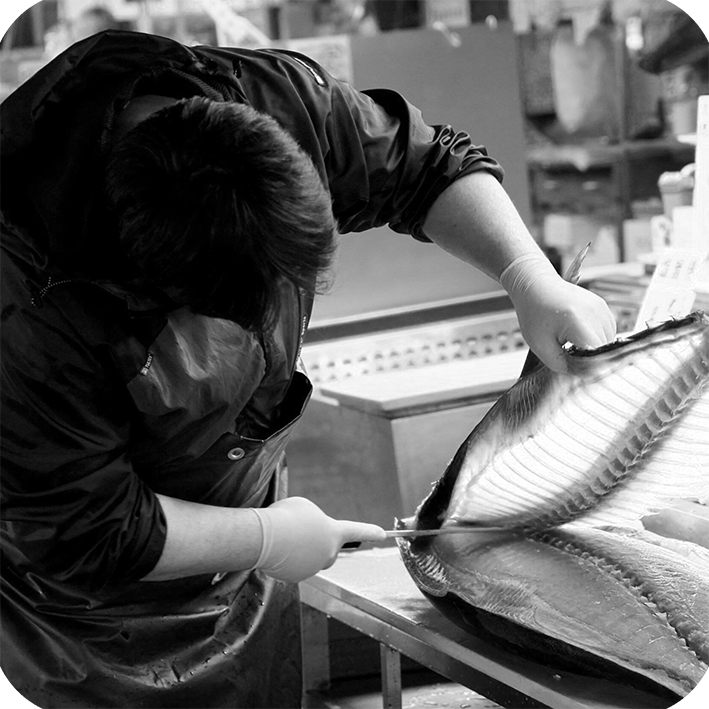
The difference between Santoku and Gyuto knives
Santoku knives typically have a shorter, wider blade with a flat edge, making them ideal for chopping and slicing. Gyuto knives have a longer, narrower blade with a curved edge, offering more versatility for slicing, dicing, and precise cutting tasks.
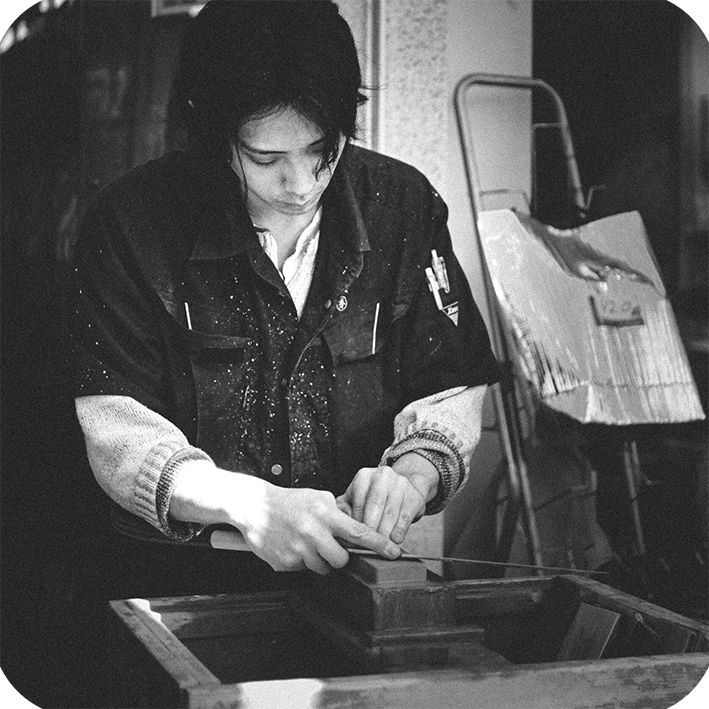
What is a 3-layer structure?
A three-layer structure in knife-making refers to a construction method where the blade consists of three layers of different types of steel. The core layer, known as the "hagane," is often a harder steel that retains a sharp edge well. Surrounding the core are two layers of softer steel, known as the "jigane," which provide flexibility and durability to the blade. This combination of hard and soft steel layers creates a blade with excellent edge retention and strength, making it a popular choice for traditional Japanese knives.
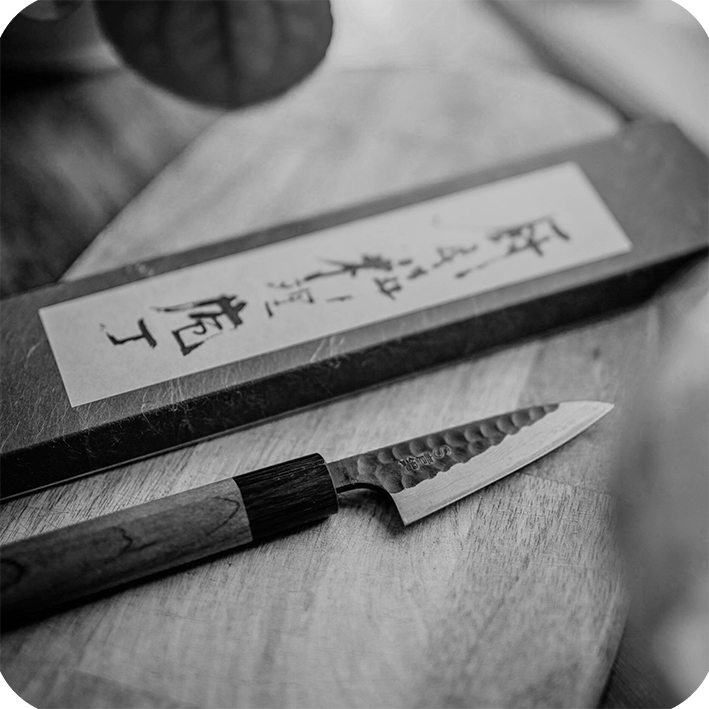
What is this pattern?
The Damascus pattern seen on knives is achieved by layering and folding steel during the forging process, creating a visually striking wavy or mottled design. This technique not only adds aesthetic appeal but also contributes to the blade's strength and durability, as the multiple layers of steel enhance its structural integrity and resistance to wear.
Type of Japanese knife
Each Handcrafted Knife displayed below serves a specific purpose to enhance your dish.
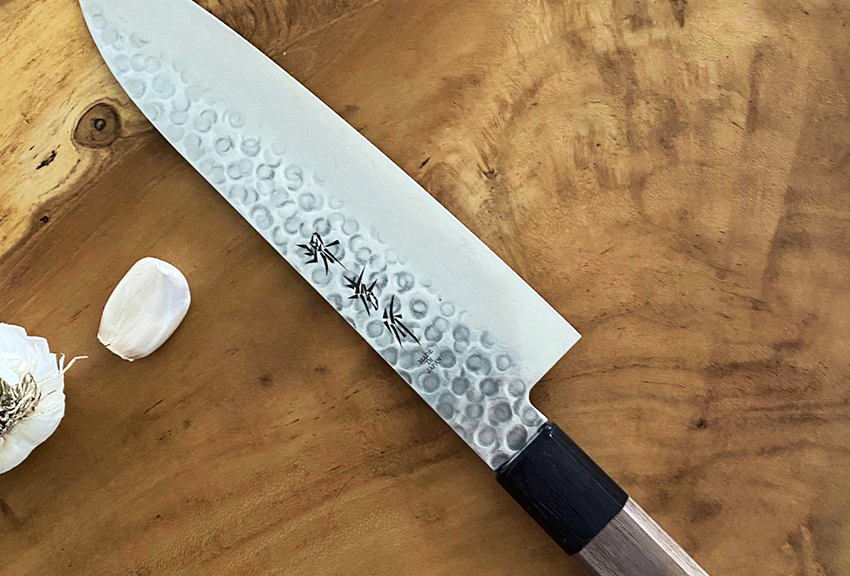
Santoku Knife
Learn about the Santoku knife's heritage and craftsmanship by delving into traditional Japanese knife-making techniques and the evolution of this versatile blade. Explore its diverse culinary applications through experimentation with various cutting techniques and recipes to unlock its full potential in the kitchen.
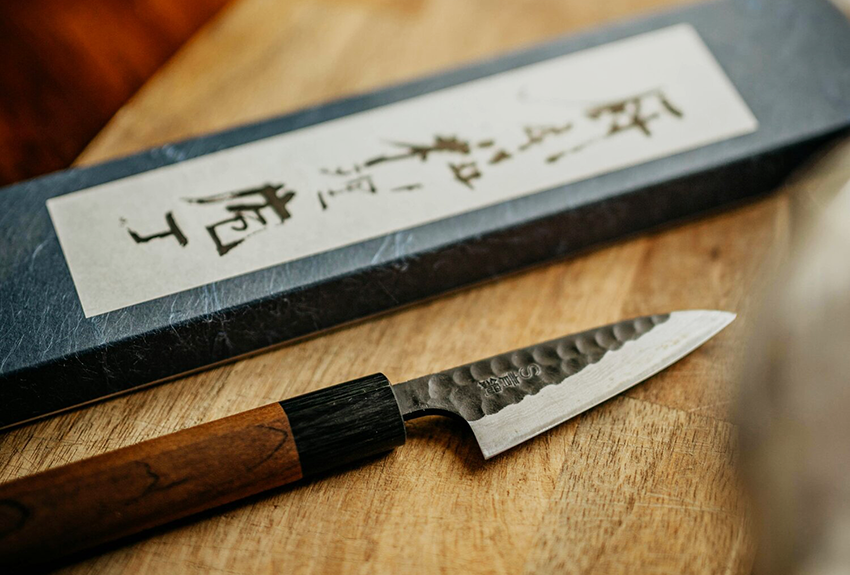
Petty Knife
Learn more about the petty knife by exploring its unique design and versatile applications in the kitchen. Discover how its nimble size and precise edge make it an indispensable tool for intricate cutting tasks, such as mincing herbs, peeling fruits, and slicing garlic with finesse.
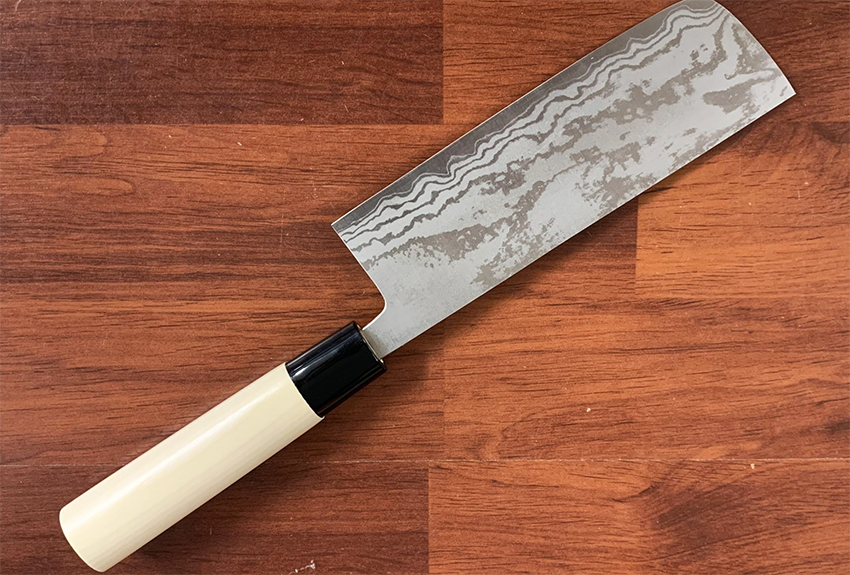
Usuba Knife
Learn about the precision of the Usuba, a Japanese knife designed for flawless vegetable preparation, ensuring culinary artistry with every slice.
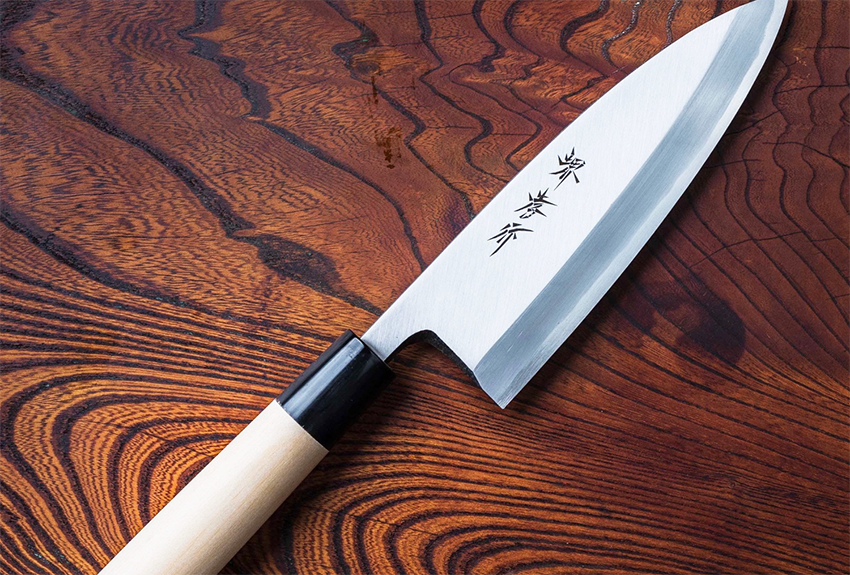
Deba Knife
The Deba knife is a traditional Japanese kitchen knife that typically features a thick, sturdy blade that allows for precise and clean cuts through fish bones and meats. It is used to primarily filet and butcher fish.
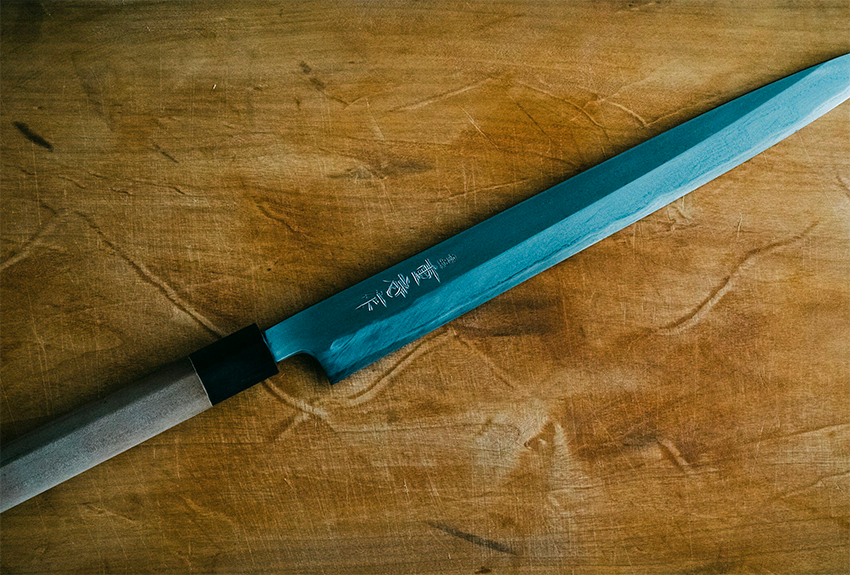
Yanagiba Knife
The Yanagiba knife's long slender blade and single bevel edge ensure precise slicing of delicate ingredients like sashimi with unparalleled finessed.
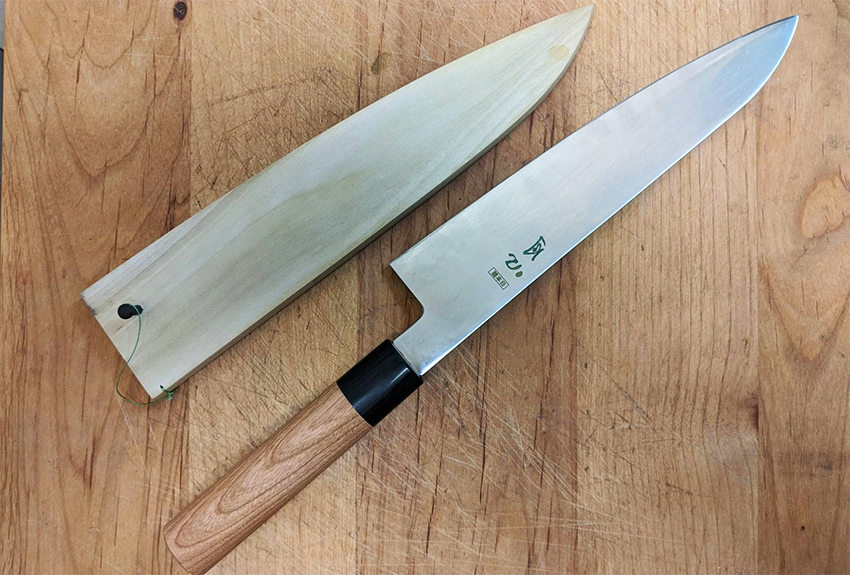
Wa-Gyuto knife
The Wa-Gyuto knife combines Japanese tradition with Western innovation, boasting a blade for precise cutting with its one-sided blade that’s used for vegetable chopping to delicate meat slicing.
>>>Go to the Japanese knife EC shop<<<
(バナー作成)